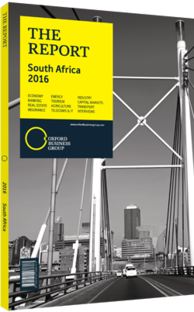South Africa balancing demand for staple crops following drought
South Africa is a major producer of maize, which is used to produce both food staples and animal feed for the domestic market, and is also exported. The drought of early 2015 affected production badly, but the outlook is more positive for the crop, which has been increasingly favoured over wheat.
Summer Crops
South Africa will produce a total of 11.9m tonnes of summer crops in 2015, down from 16.45m tonnes in 2014, according to final forecasts released by the Crop Estimates Committee of the Department of Agriculture, Forestry and Fisheries published in September 2015. This drop comes despite a significant rise in the area planted, from 3.98m ha to 4.12m ha. The fall in output is largely attributable to the impact of serious drought on the maize crop, Africa’s largest, which is forecast to drop to 9.94m tonnes from 14.25m tonnes in 2014, with the area planted shrinking slightly to 2.65m ha from 2.69m ha. The worst drought since 1992 hit South African agriculture hard. Two of the worst-affected provinces were Free State and North West, which together made up nearly two-thirds of national production in 2014. White maize production – for which South Africa usually ranks second in the world – has suffered a particularly severe impact, with output falling from 7.7m tonnes in 2014 to 4.65m tonnes in 2015. Yellow maize production is forecast to drop from 6.54m tonnes to 5.24m tonnes.
Other summer crops have also been affected. The sunflower seed harvest is expected to be 660,900 tonnes, down from 832,000 tonnes in 2014, while sorghum production may drop by more than half, to 116,500 tonnes from 265,000 tonnes. However, soybean output is expected to rise to 1.06m tonnes, from 948,000 tonnes in 2014.
Imports & Prices
The shortage of domestically grown maize is likely to lead South Africa to become a net importer of the crop in 2015, a first in seven years. Global supplies of white maize for use in staple foods have fallen, while South Africa has been unable to freely tap into the substantial international stock of yellow maize, used in animal feed, due to genetically modified organism restrictions. The cost of the imports has increased thanks to the weak rand.
As a result of these factors, yellow corn prices rose to their highest level in at least 19 years in late September 2015, at R2974 ($257) a tonne for delivery in December 2015. Rising maize prices have had a serious knock-on effect for livestock farmers across southern Africa, given South Africa’s position as a the leading producer of grain-based feed. International press reports suggest that if businesses are unable to pass costs on to consumers, meat production could fall, and job losses result in the livestock sector. A UN World Food Programme (WFP) report in June 2015 said that the maize shortage had pushed broad food prices up 6.2%, a sign of the crop’s importance in the agricultural value chain.
Forecasts
The Bureau for Food and Agricultural Policy (BFAP) forecasts that white maize plantations will continue to decline in the 2016 season, as rising prices fail to offset losses in yields in 2015. Still, it says production “might” still reach 6.9m tonnes if yields return to normal. Over the longer term the organisation expects white maize plantings to continue to decline as yields increase and the domestic market stagnates, leaving space for maintaining exports.
Domestic demand for animal feed has remained strong, hence South Africa’s likely shift to net-importing in 2015. While plantings are expected to decrease in 2016, if yields return to trend, the country can expect a crop of around 6m tonnes, according to BFAP, moving South Africa back towards net-exporting status. While lower prices will likely result, pushing plantings lower in the short term, long-term trends in animal feed demand are promising. BFAP forecasts that demand for maize animal feed will rise to 7m tonnes in 2023-24, from 4.8m tonnes in 2014-15.
You have reached the limit of premium articles you can view for free.
Choose from the options below to purchase print or digital editions of our Reports. You can also purchase a website subscription giving you unlimited access to all of our Reports online for 12 months.
If you have already purchased this Report or have a website subscription, please login to continue.

